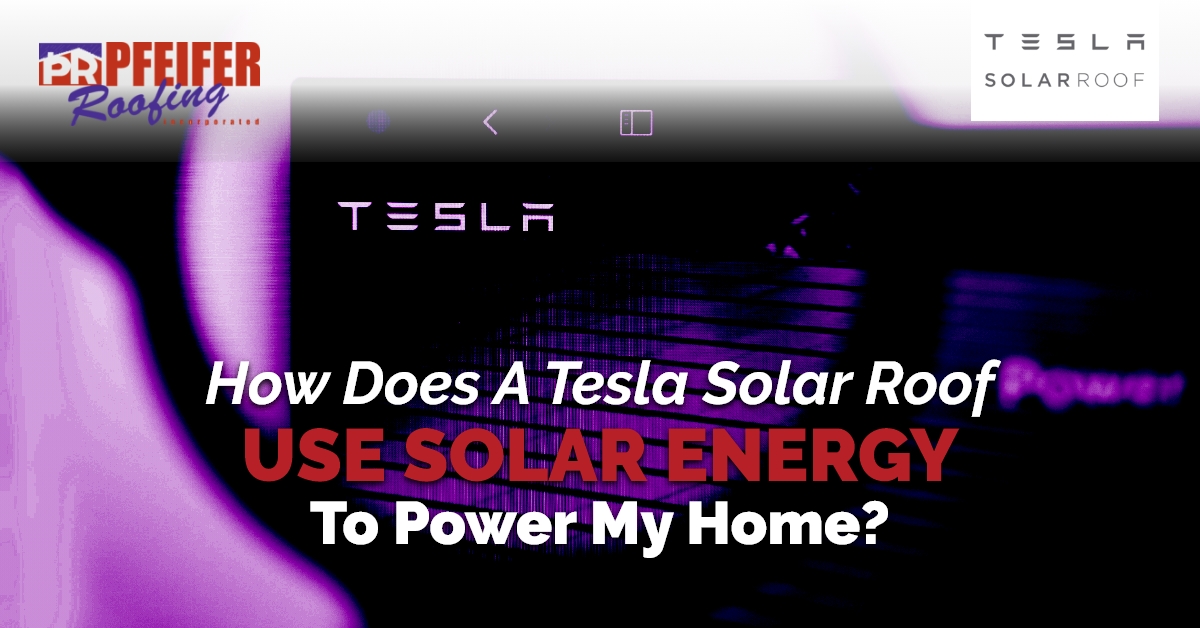The Tesla Solar Roof has been a true game-changer in the solar and roofing industries. It provides homeowners with a versatile, low-maintenance way to produce their own sustainable power. The Tesla Solar Roof is more than just a roof system. It’s a complete solar energy setup which can be customized to meet your energy needs.
A key component of every Tesla Solar Roof system is the gateway. This device is essentially a controller. It receives input from the solar cells, your utility connection, and your home’s electrical system. Based on the input, the gateway then determines where to draw electricity from and where to send the electricity.
There are four ways in which the Tesla gateway can route power through your home.
1. From the Roof
This is the most direct way a Tesla Solar Roof can power your home. The solar cells capture sunlight, convert it to electricity, and send the electricity to a component called an inverter. The inverter transforms the direct current (DC) to alternating current (AC). The AC then travels through your home’s wires to any lights, appliances, or electronics you happen to be using.
What if your Tesla Solar Roof is producing more electricity than your home is currently using? Then, the gateway will send the excess power to your Tesla Powerwall. This is basically a large battery that can be installed in conjunction with your Tesla Solar Roof. While you don’t technically have to have a Powerwall installed, we do recommend it.
2. From the Battery
When it is cloudy outside, or at night, your Tesla Solar Roof won’t produce electricity. But don’t worry; you can still make your microwave popcorn or turn on your lights. When the solar cells are not producing electricity, the gateway will tell your home to draw power from the battery — your Tesla Powerwall.
Sometimes homeowners worry what will happen if their Tesla Powerwall runs out of electricity. Luckily, Tesla Installers are trained to design Tesla Solar Roof systems to prevent this issue. Your installer will assess your energy needs and recommend the right number of Powerwalls to ensure you don’t run out of power. The average home only needs two or three Powerwalls, but you can have as many as 10.
3. From the Utility
Some Tesla Solar Roof owners opt to go “off grid” and disconnect from the public utility when their new roof is installed. If you build a new home in a rural area, you might never connect to the grid in the first place. In these situations, your gateway won’t be able to access this third option. However, if you are still connected to the grid, your gateway might, at times, opt to draw power from the public connection.
If you don’t have a Tesla Powerwall, your home will draw power from the grid whenever the solar cells are not actively producing electricity. The meter will keep track of how much electricity you use — just as it would without a solar roof. But there is one difference, here. When you have a Tesla Solar Roof and no Powerwall, any extra electricity you produce gets fed back into the grid.
At the end of the month, your electric company will compare the amount of electricity you used to the amount you supplied. Most Tesla Solar Roof owners produce more than they use. They therefore receive a check, instead of a bill, from their electricity provider.
4. “Storm Mode”
The fourth way your gateway directs power is in what we’ll call “storm mode.” This pathway is used when there is a public power outage. In other words, it kicks in when your home is no longer able to draw power from the grid.
In this “storm mode,” your home stops feeding power to the grid, and it stops trying to draw power from the grid. It instead draws power directly from the Tesla Solar Roof. Or, if you have a Tesla Powerwall, the gateway may tell your home to draw power from the battery.
The fact that “storm mode” exists means when your neighbors are without electricity, you’ll still have it. There’s no need for a generator, either. The Tesla Powerwall is capable of meeting all your energy needs during a storm. The gateway will ensure a seamless transition. Your lights should not even flicker.
The Tesla Solar Roof is a great option for homeowners seeking a sustainable, green power source. Its versatility means you can stay connected to the grid, or go off-grid. You won’t lose power during a storm, and you can enjoy freedom from expensive electricity bills. If you would like to learn more about the Tesla Solar Roof and how it works, contact Pfeifer Roofing in Salem, Oregon. Our Tesla Installers can assess your needs and answer any questions.

